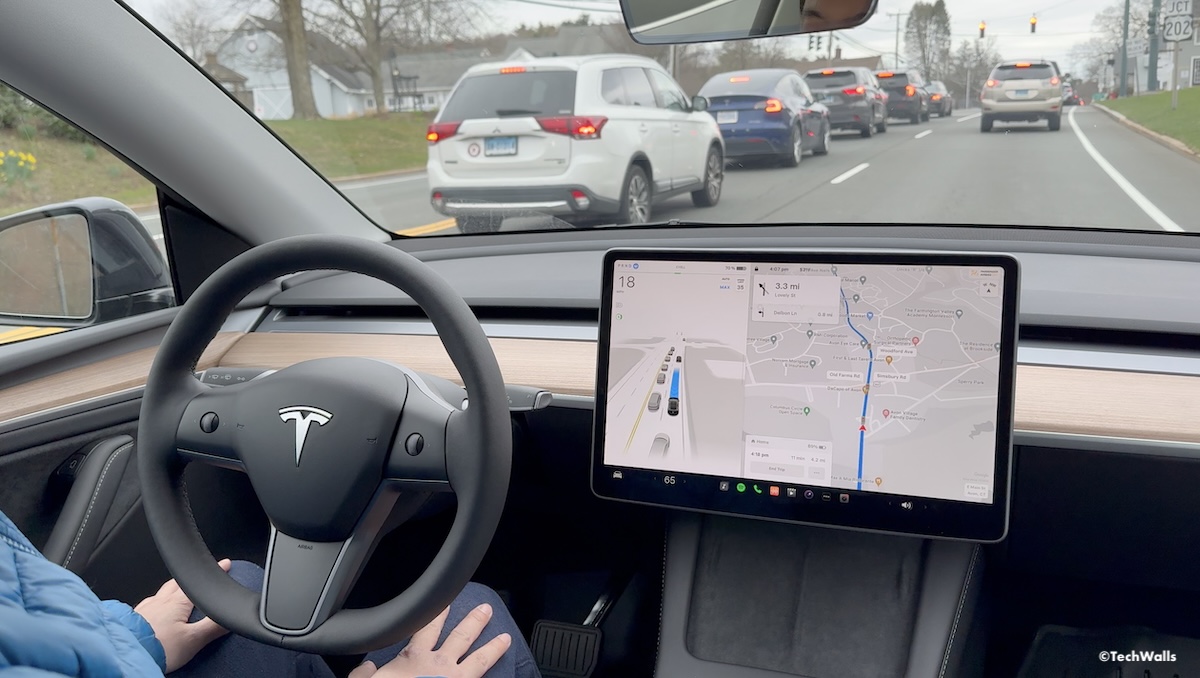Tesla recently added “Supervised” to the Full Self-Driving moniker, and this appears to be making a concerted effort to clarify the feature’s requirements and limitations. Despite the futuristic promise of a fully autonomous vehicle, the current FSD version still requires active driver supervision and it is not yet a substitute for human attentiveness.
Tesla has continued to refine and expand the FSD technology. The latest version, FSD version 12, sheds the beta label, showing Tesla’s confidence in the system’s readiness for wider use. They also rolled out an one-month free trial to all eligible Tesla owners to accelerate adoption and normalize the technology among the general public.
With the newest FSD, many Tesla owners report high satisfaction with its performance. Some users love it and think it’s a huge improvement, while others find it stressful and unreliable. Many complaints focus on FSD v12’s performance in difficult driving conditions, like city streets and rush hour traffic. I tested it for a few hundred miles and was quite surprised with the improvements over the FSD 11 that I used not long ago. The older version was almost unusable for me; My car always clung too much to the left lane, didn’t slow down properly when approaching a curve, sometimes failed to make a turn, and especially made phantom braking on the highway. I felt unsafe and therefore, didn’t use FSD until the new version came out.
I set the driving mode at Chill to have larger following distance and not make too many lane changes; The speed offset is also set automatically for the most natural driving experience. I drove my Model Y for over a week and I almost didn’t have to disengage the FSD system. There were just 4 times I had to intervene and took over the control, fortunately I recorded some of the incidents.
The first time is when I was waiting in line to make a left turn, the car in front of me was actually trying to turn left to a closer street; My car decided to make a sudden lane change to pass it but I felt unsafe because there was another car driving through, so I pressed the brake pedal to stop it. The lane change might be successful but most people won’t be as aggressive.

The 2nd time is when I drove through a construction zone and the right lane is closed. My Tesla probably was not aware of it and kept changing to that empty lane while all cars are waiting on the left lane. So I turned the steering wheel to stop the lane change and disengage FSD.
The 3rd time was when my Tesla tailgated another car; That car slowed down and came to a stop, I felt like if I hadn’t hit the brake, there would have been an accident.
Lastly, there was a big pothole on the road and the system couldn’t see and avoid it, so I had to take over and change the lane by myself.
Overall, I really love the new FSD and appreciate its improvements over the last version. My Tesla is obviously not autonomous yet as it still requires my attention. It may not always make the correct decisions, so it is important to be aware of the system’s limitations and to be prepared to intervene at any time. Having said that, I feel much more relaxed during long rides as my Tesla could handle most situations pretty well. In my opinion, the FSD upgrade is not worth $8,000 but you should consider it if the price drops to around $$5,000-6,000. It is really useful if you make a lot of road trips.
Disclosure: We might earn commission from qualifying purchases. The commission help keep the rest of my content free, so thank you!



